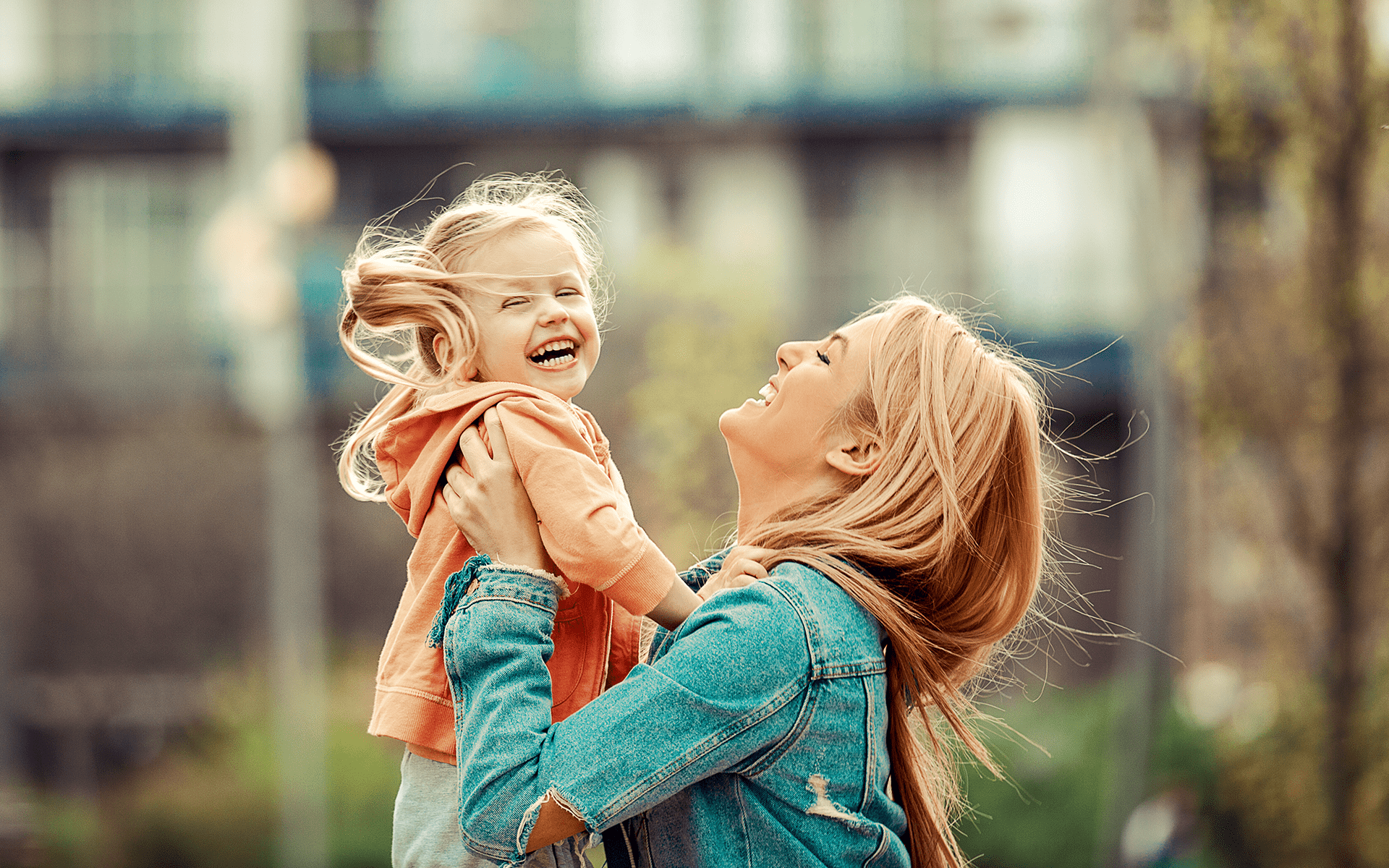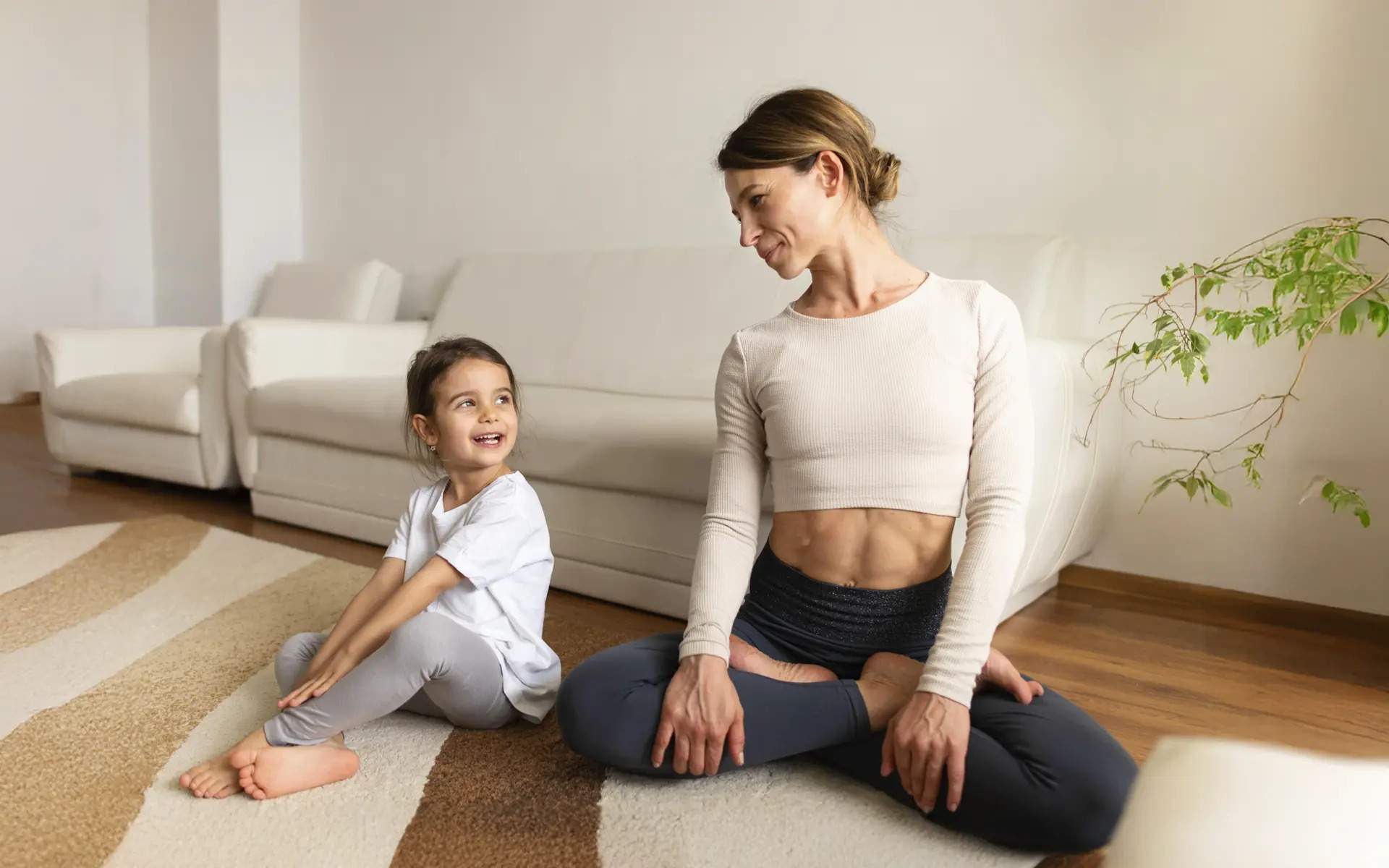That moment when your baby meets your reach to pick her up and molds to your body as you hold her. When your preschooler calls out to you, emphatically pointing at the crescent moon he discovered, and you join him in looking up at the night sky. Or when your fifth grader catches your proud gaze in the audience of other parents during her elementary school graduation ceremony.
According to emotion scientist Barbara Fredrickson, these small moments are when love happens between parents and their children.
Her research highlights that positive emotions like love, joy, and gratitude help us grow and become better versions of ourselves. While she used to think that all positive emotions were equally helpful, she has come to realize that love might be unique.
She now calls out love as especially beneficial for our health and growth. Apart from slowing down aging, love broadens our awareness of others’ needs and increases our feelings of social connection and oneness with others. Children who have early loving relationships with their parents grow up to be more compassionate adults.
We interviewed Fredrickson about how love grows between parents and their children and why it is important for children’s development.
How Love Differs From Other Emotions
Maryam Abdullah: Your definition of love is different from most conventional definitions. Can you explain how you see love between parents and children?
Barbara Fredrickson: I study emotions, especially positive emotions. One thing that is true of all emotions is that they are short-lived: They last for seconds, maybe minutes, but not hours, weeks, days, years, or a lifetime.
Love is obviously very complex, but one piece of it is an emotional piece. What I study is love the emotion as moments—even micro-moments—of shared positivity that are accompanied with mutual care, concern, and a synchrony that shows up both behaviorally (in terms of nonverbal synchrony) and also biologically (in terms of physiological synchrony). I’m looking for the most elemental unit of love, and that elemental unit of love is these positive warm connections that involve synchrony.
It’s different than the kind of shared positivity you might have if you’re both watching a funny movie. This is more about shared positivity in connection, and when that occurs in a caring way with synchrony, those moments of positive emotions seem to be especially nutritious for our growth and development.
We know from research on parents, infants, and young children that responsive, positive connection is an important resource that helps develop the greater sense of bondedness and trust between parents and kids.
We know from research on parents, infants, and young children that responsive, positive connection is an important resource that helps develop the greater sense of bondedness and trust between parents and kids.
MA: What happens in their minds and bodies when children experience love from their parents?
BF: There is this synchrony in the tempo of action and connection, often through eye contact and touch, that is evident when we see a parent and child really connecting or showing this positive dance of responsiveness that is also connected to physiological synchrony. For example, there’s some work coming out of Ruth Feldman’s research labthat shows synchrony in subtle shifts in oxytocin.
Oxytocin is the neuropeptide that has been linked to social connectedness, bondedness, caring, and protecting people you love, and also plays a complex role in in-group versus out-group relations. Oxytocin, which has often been related to big bonding moments like sexual activity, childbirth, and lactation, also shows subtle shifts that are associated with these warm moments of connection. These ways in which people, including parents and their kids, co-experience positive emotions have clear biological signatures.
There is some evidence to suggest that there’s an important neural synchrony, as well. The more two individuals are sharing the same moment, ideas, or focus, their neural activity ends up being very similar. We’ve done some work to show that there’s synchrony in other biological signals like heart rate and respiration.
Finding Opportunities to Show Love
MA: Attunement seems to be an important prerequisite for us to experience love, but this can be hard for parents when they are trying to juggle work and family demands. What are some ways parents can tune into their children more so that love can flourish?
BF: I think having an appreciation for those moments that are the most elemental unit of love and how those are what help people and children feel loved and feel that they can trust and be open. What I like about this theory, which is what I call positivity resonance theory, is that it helps to point out how you would create this mysterious thing that we call love, and these other mysterious things called trust and commitment, because we know we can’t just talk ourselves into loving and trusting.
One of the things we know about positivity resonance is that there are a few preconditions for such moments to emerge. One of them is a sense of safety in this current circumstance that allows you to be more open and other-focused. Sometimes people think of safety as a monolithic thing—that you’re either in a safe home or neighborhood or not. But there are momentary shifts in perceived safety—when you feel safe in this moment and context.
The other precondition for positivity resonance to emerge is real-time sensory connection, best exemplified by being face to face. It’s also possible to achieve somewhat through shared voice only, but eye contact seems to be central to this. If we take this notion seriously of real-time sensory connection as being a necessary platform for positivity resonance or momentary love to emerge, then a parent can support that by putting away all other distractions. The day-to-day experiences of love can’t be supported when our attention is drawn to so many different things. So prioritize those activities and moments in your day when you can jointly experience something fun, silly, and comforting together, and recognize that touch, eye contact, and tracking one another’s emotions is your key to that.
One of the best examples of positivity resonance are those moments of smiling at a baby and of trying to get a baby to smile back at you—that is a delicate dance. You need to bring your full attention to it, but also be really attuned to what level of [intensity] is appropriate for that baby because if you come on too strong, you can make the baby cry instead of laugh even if your intention is to make it fun.
The day-to-day experiences of love can’t be supported when our attention is drawn to so many different things. So prioritize those activities and moments in your day when you can jointly experience something fun, silly, and comforting together.
We just need to be able to find the spirit of that moment that works with older children, because now it’s a little more through conversation, maybe a little less emphasis just on nonverbal expression, but nonverbal expression is still really key. It’s not like our need for that warmth and that dance of responsiveness goes away, but it just gets accompanied by words. If we think about how we connect with preverbal infants, we can try to bring some of that same connection once we have more verbal connections with our kids.
We know that positivity resonance withers when people try to connect over technology instead of face to face. So even having the distraction of the possibility that your parent can be pulled away by looking at their phone can be a hindrance.
MA: Are there any other ways that parents may miss out on opportunities to show love?
BF: I think that having an openness to the things that interest your kid and just going in that direction [is important]. For me, as a small example, I’ve never in my life really been much of a sports fan until I had two boys—and then it was the thing that we could do together and that I came to enjoy because I enjoy their enjoyment. Now, the best is actually going to see sporting events so we can high-five at a good play and just enjoy being spectators together in person. Or if we’re not able to be together because now I have a son in college, finding ways to ask them, “Did you see that game?” Without trying, I became a sports fan so that I could stay with the interests of my kids.
MA: Your view of love is expansive and without borders. How can parents help their children broaden their experience of love beyond their family and close friends?
BF: Kids learn a lot through modeling, so parents can be having warm positive connections with people they encounter in their community—even if it’s a one-time encounter with the person making their coffee or another parent at the school. The more that we adults have moments of positivity resonance with strangers and acquaintances in our community in the presence of our kids, the more our kids learn how important it is to connect and be attuned to everybody in the right moment in a context that feels safe and involves face-to-face connection. The more we disregard everybody except those in our family, the more our kids will learn to disregard everybody else except those in the family.
One of the things I argue about positivity resonance is that it is not exclusive. Sharing positive emotions is something we can do with any other human and our mammal pets probably, as well. It is a kind, caring way to connect with people. The more we connect more broadly with members of our community and in open, respectful ways, the more our kids learn that, too.
MA: You’ve argued that love is supremely consequential for human development. Why?
BF: A lot of that comes from developmental science on how important responsive, caring, attuned parenting is because, poignantly, a subset of parents and caregivers who are unable to offer that kind of caring attunement are depressed caregivers. We know that depressed caregivers have much less behavioral synchrony with their kids. One feature of depression is “psychomotor retardation”—it’s like you’re wearing that lead apron from the dentist’s office, making people move differently and without that behavioral synchrony and shared smiles. A lot of depression (not all of it) is also associated with “anhedonia” or the inability to feel positive emotions. The consequences for children of having a depressed caregiver last for decades. It affects social development and cognitive development into adolescence if you had a depressed caregiver in infancy.
These moments of positive connection that parents can develop with their kids are, as an affective neuroscientist described, like fertilizer for the brain. They support brain development and social skill development. One of the most important things we can give to our kids is that caring attuned attention. Finding ways to prioritize that within each day as a parent is tough. We’re all juggling a million things, but we don’t want to juggle out our kids and our ability to connect in those ways.
This article originally appeared on Greater Good, the online magazine of UC Berkeley’s Greater Good Science Center, one of Mindful’s partners. View the original article.








